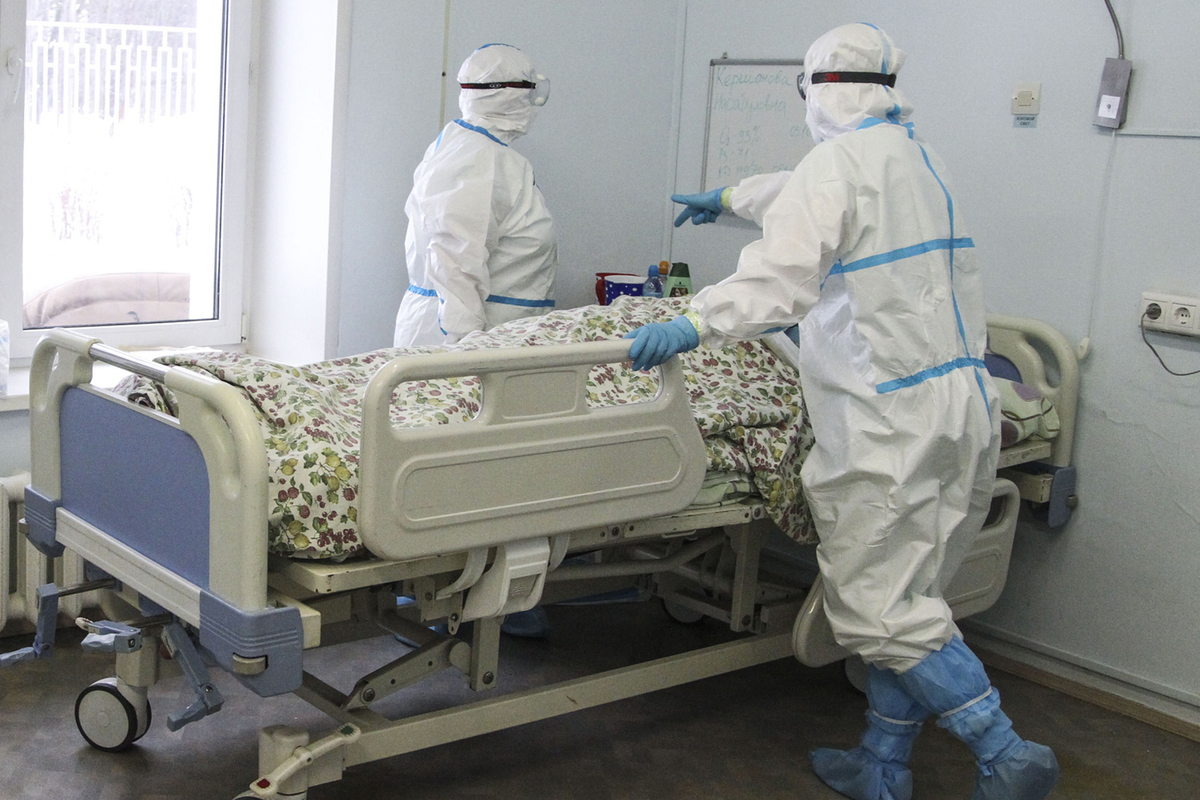In the United States, cases of transmission of coronavirus from deer to humans have been identified
[ad_1]

It mutates in animals
A new cycle of SARS-CoV-2 in nature was discovered by employees of the Animal and Plant Health Inspection Service of the US Department of Agriculture. Humans transmitted the coronavirus to white-tailed deer more than 100 times between late 2021 and early 2022, according to a study conducted by the agency (its results were published in the authoritative scientific journal Nature Communications). The authors of the work suggest that the virus probably spread widely among deer, then it mutated in the body of animals. After that, the deer transmitted these modified versions of the virus to humans at least three times.
Meanwhile, Canadian scientists have made a sensational announcement about the first confirmed case of transmission of SARS-CoV-2 from white-tailed deer to humans. The infection occurred in Ontario. Last fall, 17 deer infected with COVID were found there.
It’s not exactly clear how deer become infected with the virus, but studies show it can happen through drinking water contaminated with human feces. COVID has spread widely in North American deer, with up to 80% of the deer infected in some US states. Researchers began searching for the coronavirus in free-roaming white-tailed deer in 2021. During the first year of observations, scientists collected more than 11,000 samples of deer biological material. Almost a third of the animals were found to have antibodies to the coronavirus, indicating that they had previously been exposed to infection, and 12% were actively infected. The scientists compared virus samples isolated from deer with samples obtained from human patients and mapped the evolutionary relationships between them. They concluded that the virus passed from human to deer at least 109 times, and then frequently from deer to deer. The findings raise fears that deer may be the source of a mutated coronavirus that can easily be transmitted to humans.
Recall that since its emergence in 2019, SARS-CoV-2 has rapidly evolved and generated many genetic variants, including dangerous Alpha, Beta, Gamma, Delta, and Omicron. In addition to humans, SARS-CoV-2 infections have been reported in a wide range of captive wild, domestic and exotic animals such as deer, mink, rats, otters, ferrets, hamsters, gorillas, cats, dogs, lions and tigers. In addition, animal-to-human transmission of SARS-CoV-2 (eg, from farmed minks, domestic cats, and white-tailed deer) has been documented, making animals potential reservoirs for secondary zoonotic infections. A reservoir animal for SARS-CoV-2 refers to a host in which the virus circulates surreptitiously, persisting in the population, and can be transmitted to other animals or humans, causing disease outbreaks.
“Animal hosts also give the virus new opportunities to mutate and evolve, potentially leading to new variants that can infect humans. If these variants are sufficiently different from those that previously circulated among humans, they can bypass some of the defense mechanisms of the immune system, ”microbiologist Konstantin Zverev told MK.
Previous research has shown that the virus can be transmitted from humans to animals, from pets to pests, including cats, dogs and rodents. This is the so-called reverse zoonosis, when an animal becomes infected with a disease from a person. This is the opposite of the more well-known zoonosis, where humans contract the disease from an animal. Zoonosis is one of the theories for the origin of the original strain of COVID. Recent examples of COVID reverse zoonosis include culling of minks on Danish fur farms after being infected with the virus from humans in late 2020. It is assumed that the COVID virus originated in bats and spread to humans through an intermediate host, but this animal has never been found.
Meanwhile, as Lev Averbakh, an ambulance doctor from St. Petersburg, says, a new variant of the coronavirus, the Eris omicron strain, has already been identified in Moscow, St. Petersburg and a number of regions: and the peak, according to the Ministry of Health, may come in the fall. The virus spreads rapidly from person to person and is good at evading immune defenses. The good news is that the new option is not so dangerous yet. The main symptoms of “Eris” are: runny nose, headache, fatigue, sneezing, sore throat. So you don’t need to be afraid of a severe course, you don’t need to take vitamin D and zinc either, gargling with soda is again not necessary, homeopathy is also unlikely to help. Yes, and herbs for prevention and treatment will also help as if from a dead donkey’s ears. All this can only negatively affect your immunity, and hope for all ARVI-associated diseases is only on it. Just sit at home, ventilate the room so as not to infect other people, since, for example, older people always tolerate any SARS worse.
Newspaper headline:
Shut up, sick deer…
[ad_2]
Source link








